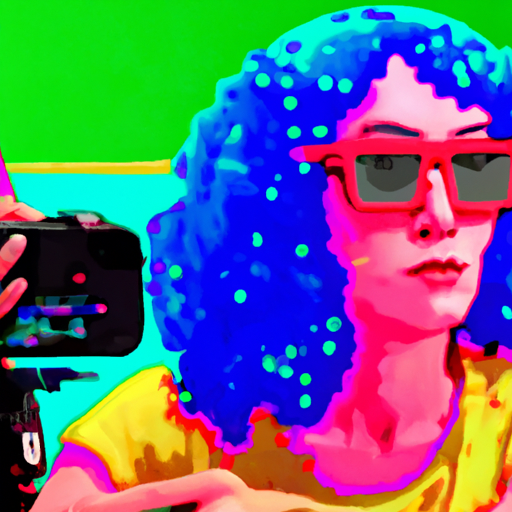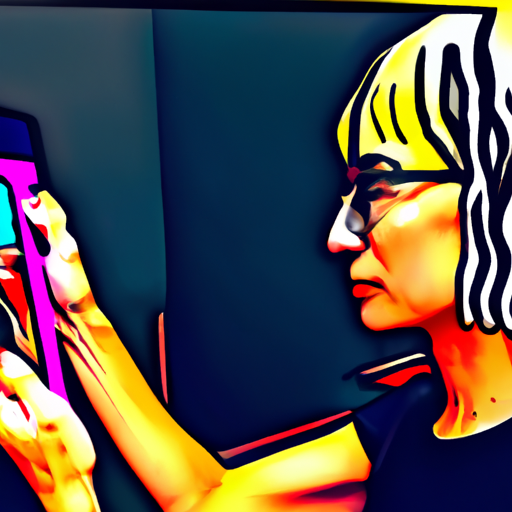
-
Table of Contents
- Creating Illustrations for Augmented Reality Apps
- The Role of Illustrations in Augmented Reality Apps
- Best Practices for Creating Illustrations for AR Apps
- 1. Understand the AR Environment
- 2. Maintain Consistency with the App’s Design
- 3. Optimize for Performance
- 4. Test and Iterate
- Case Studies: Successful Illustrations in AR Apps
- 1. Pokemon GO
- 2. IKEA Place
- Conclusion
Creating Illustrations for Augmented Reality Apps

Augmented reality (AR) has become increasingly popular in recent years, with numerous applications being developed for various industries. One crucial aspect of creating a successful AR app is the use of high-quality illustrations. In this article, we will explore the importance of illustrations in AR apps and provide valuable insights on how to create compelling and engaging visuals.
The Role of Illustrations in Augmented Reality Apps
Illustrations play a vital role in enhancing the user experience of AR apps. They help to convey information, guide users, and create an immersive environment. Here are some key reasons why illustrations are essential in AR apps:
- Visual Communication: Illustrations can effectively communicate complex ideas and concepts in a visually appealing manner. They can simplify information and make it easier for users to understand and interact with the AR app.
- User Engagement: Well-designed illustrations can captivate users and keep them engaged with the AR app. They can create a sense of wonder and excitement, making the overall experience more enjoyable.
- Brand Identity: Illustrations can help establish a unique brand identity for the AR app. Consistent and recognizable visuals can make the app stand out from competitors and leave a lasting impression on users.
- Guidance and Navigation: Illustrations can be used to guide users through the AR app, providing clear instructions and navigation cues. They can help users understand how to interact with virtual objects and navigate the augmented environment.
Best Practices for Creating Illustrations for AR Apps
Creating illustrations for AR apps requires careful consideration of various factors. Here are some best practices to follow when designing illustrations for augmented reality:
1. Understand the AR Environment
Before creating illustrations, it is crucial to have a deep understanding of the AR environment in which they will be used. Consider the following:
- How will the illustrations interact with the real world?
- What are the limitations and possibilities of the AR platform?
- How can the illustrations enhance the user experience?
By understanding the unique characteristics of AR, you can create illustrations that seamlessly integrate with the augmented environment.
2. Maintain Consistency with the App’s Design
Illustrations should align with the overall design language and style of the AR app. Consistency in visual elements, such as color palette, typography, and shapes, helps to create a cohesive and polished user experience. Consider the app’s target audience and the emotions you want to evoke when choosing the illustration style.
3. Optimize for Performance
AR apps often require real-time rendering of 3D objects and animations. To ensure smooth performance, optimize the illustrations for the target platform. Use efficient file formats, reduce polygon counts, and optimize textures to minimize the app’s memory and processing requirements.
4. Test and Iterate
Testing is crucial to ensure that the illustrations work well in the AR app. Conduct user testing to gather feedback and iterate on the design. Pay attention to how users interact with the illustrations and make adjustments based on their feedback.
Case Studies: Successful Illustrations in AR Apps
Let’s take a look at two successful AR apps that effectively utilize illustrations to enhance the user experience:
1. Pokemon GO
Pokemon GO, a popular AR game, incorporates illustrations seamlessly into its gameplay. The app uses vibrant and recognizable illustrations of Pokemon characters, which not only engage users but also provide visual cues for navigation and interaction. The consistent illustration style contributes to the app’s brand identity and has played a significant role in its success.
2. IKEA Place
IKEA Place, an AR app developed by IKEA, allows users to virtually place furniture in their homes. The app uses realistic 3D illustrations of furniture, which blend seamlessly with the real-world environment. The illustrations help users visualize how the furniture will look in their space, making it easier for them to make purchasing decisions.
Conclusion
Illustrations are a crucial component of creating compelling and engaging augmented reality apps. They enhance the user experience, communicate information effectively, and contribute to the app’s brand identity. By following best practices and learning from successful case studies, developers can create illustrations that captivate users and make their AR apps stand out.
